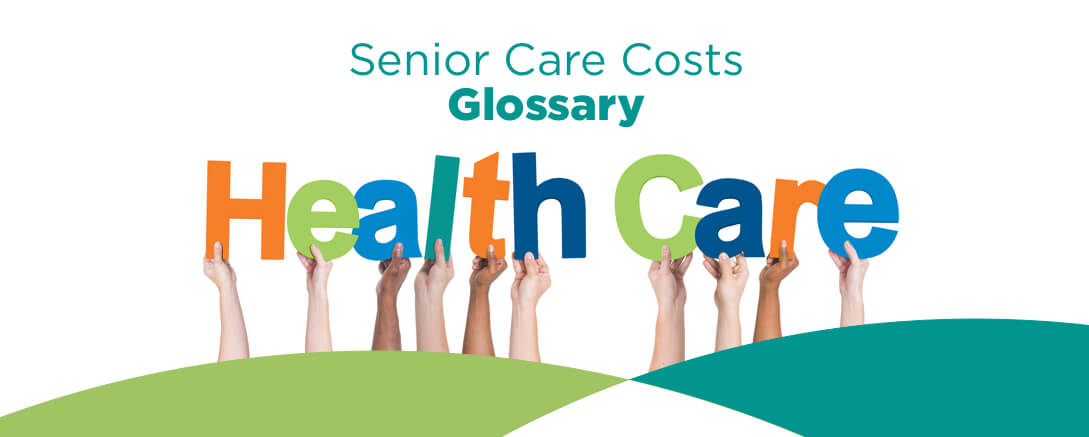Senior Care Costs Glossary: Key Terms & Financial Resources

How can you confidently plan for assisted living when the terminology around senior care costs feels confusing or unclear? Whether you’re just beginning to explore assisted living expenses, or sorting through financial details, the range of terms used in the industry can feel overwhelming and unfamiliar. From understanding the differences between Medicare and long-term care insurance to making sense of pricing models, it’s easy to get lost in the jargon—and costly mistakes can happen when coverage is misunderstood.
That’s why we’ve created this senior care glossary focused on cost-related terms and helpful financial resources. Understanding these key terms is a vital first step to making informed decisions for yourself or a loved one.
Bridge loans, such as the Elderlife Bridge Loan, are exactly what they sound like: short term loans “designed to serve as a bridge until more permanent financial resources can be arranged.” While they help cover assisted living costs temporarily, they’re not a long-term solution.
They were created to help seniors, and their families afford the cost of assisted living, home care or skilled nursing over a limited time period. Typically, these loans are applied on a short-term basis for periods ranging up to 12 months, though they sometimes extend longer.
This option may be right for you if:
- You need help with short-term costs regarding the move but have secure financing options for the longer term.
- You’re waiting on VA Aid & Attendance, Medicaid, or home sale proceeds and want a loan that’s clearly documented so it won’t be treated as income.
- Your selected assisted living facility may pay the interest on the loan as an incentive for you to move in.
[Sources: PayingforSeniorCare.com, DementiaCareCentral.com]
Government Programs for Senior Care
A number of government assistance programs may help offset the cost of senior care if you qualify.
Here’s an overview of the key categories:
- Housing & home expenses (HUD Section 202 or vouchers, state tax freezes, LIHEAP, weatherization).
- Relief for recurring costs such as property taxes & utilities
- Assistance with one-off costs such as home repair
- Provision of affordable or subsidized housing
- Medical and health (such as Medicare — see more below)
- Food and nutrition
- Monetary assistance such as monthly food allowances
- Delivery services for isolated or disabled seniors
- Employment and income
There are also likely to be local options near you. States and towns often make available other forms of assistance with rent or care in a senior living environment. Local government representatives or assisted living facilities are great resources for more information. If you’re located near a Benchmark Community, call 8 to speak to one of our trained Financial Concierges
Make sure to look into this helpful resource from SeniorLiving.org for a full breakdown of available programs, including by state.
Long-Term Care Insurance
Unlike traditional health insurance, long-term care insurance is designed to cover long-term services and support. This includes personal and custodial care in a variety of settings such as your home, an assisted living community organization, or another facility.
The great thing about this type of insurance is that it is highly flexible and covers much of the cost of senior living communities. For instance, long-term care policies can reimburse policyholders a daily amount for services like bathing, dressing, or eating — not just doctor’s visits or nursing care.
An important note: many policies have limits on how long or how much they’ll pay. Make sure to check those limits or investigate any hidden costs, like whether the insurance company will raise the premium on your policy after you buy it.
[Source: ACL.gov]
Medicaid
Medicaid provides health coverage to millions of Americans, including eligible low-income adults, children, pregnant women, older adults, and people with disabilities. Medicaid is administered by states, in line with federal requirements. The program is funded jointly by the states and the federal government.
Medicaid coverage is available to older Americans, and you may be eligible (check with your state’s healthcare office to be sure). While it differs from Medicare, it’s essential for many families who are managing long-term care expenses. Visit Medicaid.gov for more information.
[Source: Medicaid.gov]
Medical Deductions
In certain cases, expenses associated with assisted living, memory care or nursing homes are considered tax-deductible medical expenses.
To qualify, you or your dependent must be in that facility primarily for medical care (which includes assistance with activities of daily living). If you’re in the facility for medical reasons, then all costs — including meals and lodging — may be tax-deductible as a medical expense. Visit IRS.gov for more information on deductions for medical expenses. [Source: IRS.gov]
Medicare
Medicare is the federal health insurance program for:
- People who are 65 or older
- Certain younger people with disabilities
- People with End-Stage Renal Disease (permanent kidney failure requiring dialysis or a transplant).
Medicare comes in a few different parts. Check your Medicare card if you’re not sure what kind of coverage you have.
Here’s a simple overview of the core Medicare offerings, known as Original Medicare:
- Part A = hospital insurance
- Covers inpatient hospital stays or care in a specialized facility like skilled nursing or hospice
- Part B = medical insurance
- Covers doctor visits, outpatient care, medical supplies and preventative care
- Part C = “all in one” coverage
- Includes everything in A, B & usually Part D
- Part D = prescription drug coverage
- Adds drug coverage to Original Medicare plans (such as A & B)
It’s important to note that though these are federal insurance programs, they’re offered by private insurance companies that have been approved by Medicare. Visit Medicare.gov for more information.
[Source: Medicare.gov]
Medigap (Medicare Supplement Insurance) is private, standardized coverage that works with Original Medicare to pay some or all of your Part A and Part B copayments, coinsurance, and deductibles (but not prescriptions, dental/vision, or assisted ‑living costs); you can’t use it if you enroll in a
Medicare Advantage plan, which is a separate, all in one alternative run by Medicare approved insurers—usually as an HMO or PPO—with its own network and cost sharing‑ rules.
[Source: Medicare.gov]
Reverse Mortgages
A reverse mortgage is a loan available to homeowners 62 years or older. It allows them to convert part of the equity in their homes into cash. Essentially, it’s a way to use the wealth you’ve built up in your home to supplement a limited income to offset senior care costs. You’re not required to pay off the loan until the home is sold or vacated.
[Source: ReverseMortgage.org]
Veterans Administration (VA) Benefits
Two VA programs provide certain older veterans with an additional monetary amount:
- Aid and Attendance (A&A) is an increased monthly pension amount paid if you meet certain eligibility requirements
- The Housebound Benefit is an increased monthly pension amount paid if you are substantially confined to your immediate premises because of a permanent disability.
If you need more details, we’ve written up a comprehensive guide to veterans’ senior housing and VA benefits.
[Source: Benefits.VA.gov]
If you’re just starting this journey, consider taking this 5-minute survey to assess your situation and determine whether it’s the right time for senior living for you or your loved one.


